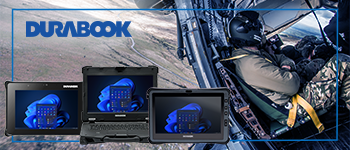Military readiness
Chris Morton and Bianca Nobilo offer a new perspective on strategy, logistics and digital defences in light of lessons learnt from the Russia-Ukraine conflict
It is only when conflict breaks out that military readiness and its potential vulnerabilities can be tested and exposed. The Russia-Ukraine war is moving to its third year, and has highlighted military readiness flaws and is reshaping strategy with some key takeaways, for example, agility in procurement, munitions testing and supply chain management. Predictions from Moscow previously outlined the conflict to be a quick exchange, but it has unfolded into a gruelling struggle, disproving some long-held assumptions about how battles are fought and the balance of military power.
The conflict has outlined an asymmetry in traditional armouries and equipment power, witness Ukrainian drones dismantling powerful Russian artillery units such as 155mm howitzers. However, there have also been some logistical learning, exposing some frailties in restocking and resupply from the defence industrial base, as they fall short of tackling demand. But what is next for the evolution of military capabilities? AI is set to take control with the help of automation and quantum computing. These technology systems go beyond shaping tactical outcomes and can actually influence how well-prepared nations are for protracted conflicts similar to Russia-Ukraine.
Ukraine’s artillery consumption outstripped NATO’s production capacity within months, underscoring a fundamental issue: Western defence industries had become structured for peacetime efficiency, not wartime urgency. For decades, spending priorities reflected counterinsurgency operations, not large-scale conventional warfare. Defence manufacturers followed slow, bureaucratic procurement cycles, building to long-term program specifications rather than operational needs. This model is no longer tenable.
A key lesson from the Ukraine conflict is the critical link between battlefield endurance and industrial adaptability. Russia’s defence industrial base was not built for a prolonged war and has struggled to pivot under pressure. In contrast, Ukraine’s ability to draw on external support networks has created a more resilient long-term position – underscoring the strategic value of a flexible, modernised defence industrial base (DIB).
AI-driven logistics and quantum-enhanced simulations will determine which militaries can sustain modern war. Predictive logistics, already in use in Ukraine, anticipates battlefield demands, ensuring supplies are replenished before critical shortages occur. Indeed, in the context of contested logistics at the strategic level, variables that include a dynamic quickly changing threat environment require analysis at the speed of AI. At the operational and tactical levels, commanders on the battlefield who have access to sophisticated pattern analysis that incorporates political, military, social and the physical environments – among others – can sustain combat operations in theatre and force the enemy to consider multiple, complex dilemmas.
AI-driven supply optimisation will analyse real-time battlefield conditions to adjust production and distribution dynamically. Nations that fail to integrate AI into logistics, manufacturing and deployment will be less responsive and fall behind.
Mass production of high-tech weaponry has failed under wartime conditions. The US Replicator Initiative is attempting to reverse this inefficiency by integrating AI-driven automation into defence production. This shift mirrors World War II when industries like Ford, Hershey and Singer Sewing Machines pivoted to war manufacturing. The difference now is that software-defined warfare demands companies capable of real-time iteration, rapid scaling and autonomous system integration.
Ukraine is already deploying AI-driven drone manufacturing, battlefield analytics and smart munitions at speeds that outstrip traditional defence manufacturers. At the Munich Security Conference, Danish Prime Minister Mette Frederiksen warned: “We have a problem, friends, if a country at war can produce faster than the rest of us.”
The future of defence production will favour firms that leverage AI to shorten the OODA loop (Observe, Orient, Decide, Act), accelerating design, testing and manufacturing cycles.
Traditional military platforms are being undermined by low-cost, high-impact technologies. A $500 drone can disable a $10-million tank. One-third of the Russian Black Sea Fleet has been neutralised by Ukrainian drones. AI-powered swarm warfare – networked, autonomous loitering munitions – has forced militaries to reconsider large, centralised command nodes, which now serve as easy targets. Ukraine’s success in AI-assisted reconnaissance, drone coordination and battlefield analytics has compelled Russia to adopt similar tactics, signalling the rapid evolution of AI in modern conflict.
Speed and scale now outweigh cost and complexity. Monolithic, exorbitant and slow-moving weapons programs – designed for decades-long procurement cycles – are being reconsidered in an asymmetric context where AI is already embedded in ISR (Intelligence, Surveillance and Reconnaissance), autonomous drone targeting and automated force coordination. In previous conflicts, nations without the resources to repel a larger, wealthier adversary were at a significant disadvantage. Whereas Ukraine has demonstrated that through the precise application of low-cost asymmetric capabilities, it can effectively even the stakes against a much larger foe. Many smaller nations will likely take note and look to apply this same acquisition strategy as a hedge against aggression. Larger, wealthier nations cannot ignore this trend – they will not only need to counter this asymmetric threat, but they will need to develop these capabilities to work alongside major weapon systems. Power projections and global deterrence still require the employment of ‘majestic-type’ weapon systems on a global scale; however low-cost AI-driven asymmetric capabilities allows a military to present multiple dilemmas to a potential adversary. A great example is CCA’s – collaborative combat aircraft – autonomous uncrewed aircraft that are developed in concert and as a part of traditional fighter development.
Lethal Autonomous Weapons (LAWs) are no longer theoretical. AI-assisted targeting is already operational, with Ukraine leveraging AI-enhanced ISR to predict enemy movements. The debate is no longer about whether AI will be used in battlefield decision-making, but rather how to ensure its use remains ethically constrained, legally accountable and aligned with international human rights norms.
The key ethical and legal distinction now lies between human-in-the-loop (oversight required), human-on-the-loop (oversight optional) and human-out-of-the-loop (fully autonomous lethal decision-making). A shift toward removing human oversight in lethal engagements risks violating the fundamental principles of proportionality, accountability and distinction in warfare. If AI decision loops become too fast for meaningful human intervention, we risk ceding moral and legal responsibility to algorithms, diminishing the very accountability that underpins the laws of war.
A nation that first entrusts real-time combat decisions to AI would not just redefine military power but could also fundamentally alter the rules of engagement, setting a dangerous precedent for warfare devoid of human ethical judgment. This shift would mark the most profound military transformation since nuclear weapons, but unlike nuclear deterrence – where human deliberation remains central – fully autonomous weapons could remove the last safeguard between war and unchecked machine-driven violence. Any integration of AI in lethal force must be bound by strict legal frameworks and international oversight to prevent an irreversible slide toward algorithmic warfare without moral restraint — a step closer to the cliff-edge of dehumanised conflict.
Quantum computing’s military potential remains largely theoretical, but its long-term implications are existential. The most immediate concern is encryption: current cryptographic systems will be obsolete the moment quantum decryption achieves practical deployment. NATO, China and Russia are already racing to develop quantum-resistant security protocols. The winner of this race will have a significant advantage in the future of digital warfare.
Technology is not just reshaping the theatre of war, but the preparation and context: Quantum-enhanced simulations could transform military planning, allowing strategists to model complex, multi-variable conflicts with more granular precision. Not to mention, AI-driven cyber warfare is already escalating – deepfake disinformation campaigns as a part of a broader psychological operation, automated hacking and AI-enhanced cyber attacks are becoming standard tools of statecraft. Old traditions are dying, modern warfare is AI-driven, and military forces need to pick up the pace.
The Ukraine war highlights the critical role of AI in modern conflict, demonstrating how asymmetric tactics and real-time decision-making are reshaping warfare. The ultimate victor in this race won’t just be the first to adopt AI, but the one that can scale and operationalise AI capabilities most rapidly across defence, logistics and manufacturing.
The global AI arms race is intensifying, with AI-native companies and tech giants now key players in defence alongside traditional firms. China and Russia are strategically integrating AI into all aspects of their military, while Western nations such as the US, UK and Israel are focusing on private-sector partnerships and autonomous systems.
Just as nuclear weapons defined 20th-century deterrence, AI and quantum technologies are now shaping strategic endurance. Future military power will depend not on traditional hardware superiority, but on a nation’s ability to fuse intelligence, autonomy and agility throughout its entire defence ecosystem.
Beyond direct military use, AI’s economic impact is equally crucial. Nations leveraging AI for industrial productivity and innovation will generate the economic surplus needed to fund sustained defence efforts. In this AI-driven era, economic resilience and defence capability are inseparable, putting technological supremacy at the foundation of strategic endurance.
Chris Morton is Global Industry Director for Aerospace & Defence at IFS. A retired attack helicopter pilot with 21 years of military and aviation experience, he now advises A&D clients on transformation while driving industry strategy within IFS.
Bianca Nobilo leads AI ethics, government relations, and thought leadership on the Executive Board at IFS. She spent a decade at CNN covering major global events and conflicts and previously worked across Aerospace & Defence in the UK Parliament.









